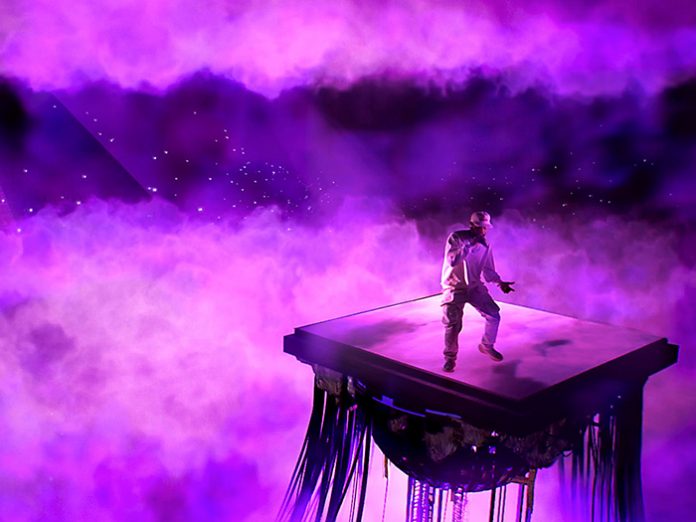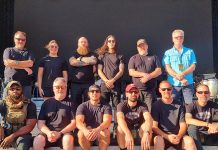
Founded in 2018 by visual and production design specialists Greg Russell and Vello Virkhaus, Xite Labs was recently approached by Director, Mike Carson and The 92 Group to assist in the production of a virtual concert for Bryson Tiller.
Xite Labs received a detailed brief with a set of storyboard images and a flow concept of the four dynamic worlds that they wanted to build. The 3D spaces were created by multiple highly skilled artists using Unreal Engine and Notch.
The studio design comprised three-sides – including an LED back wall, an LED floor with rear lights at high angles following the back wall curve – as well as several front and side filler lights.
A crane camera was fitted with a Canon 18-105 lens and a stYpe Red Spy optical camera tracking system to enable a range of motion and shots. The secondary camera featured a long lens and was offset to the left of the main LED screen for a range of classic static telephoto looks.
To support and complement any sort of XR / AR performance, it is crucial that lighting is fully aligned with the environments – which exist only in the background – to avoid the subject looking ‘shopped’ on camera.
Robe Tetra2s were used for side fills, the T1 Profiles and BMFL Blades were rigged in the front and high side lighting positions, while the SuperSpikies were at the back. “The fixtures needed lighting applied that reflected on the artist and created that fully immersive look,” stated Virkhaus.
Each fixture provided light on Tiller that closely mirrored the activity of the richly contrasting environments – from trees or pulsing lights to glowing mushrooms bursting with colour, elaborate fantasy plant life and vast open spaces with dramatic stark minimal blocks of colour and texture.
Virkhaus cites the CRI and accurate framing shutters of the T1 as key factors in his fixture selection choice. The latter was essential in eliminating light spill onto the LED screens, plus a good set of gobos and the ability to reproduce environmental colour changes instantly via the Multi-Spectral LED (MSLTM) light engines, an attribute that runs much slower with white source fixtures.
Virkhaus further praised the prism and gobos effects of the SuperSpikie and in this instance the fixtures could also create background variants with their immediate colour changing and “good hybrid-like feature set,” he remarked.
Multiple Tetra1 zoom zones turned out to be useful in getting both a varied foreground ‘hotspot’ and fill effects from the same lighting unit. “A lot of variation and power for a batten / strip light,” Virkhaus noted.
BMFL Blades were brought in as an extra by DoP Russ Fraser and used to side light the artist and create patterns and light movement. An MA Lighting grandMA2 system was used for control, with lighting and video cues timecoded for perfect synchronicity between the creative and narrative events.
The team’s biggest challenge was creating long-form narrative worlds that would transform seamlessly from one song to the next through complex spatial, geometric and lighting sequences and “drilling more deeply into the cinematic aspects of Extended Reality”. A total of 14 songs were recorded.
Lighting equipment was supplied by Russ Fraser Films and the production company was HPLA with Bryson Tiller, Ryan Hahn, and Neil Dominique as executive producers. Carson assumed the role of show director, while the overall creative direction was a collaboration between Virkhaus and Russell, Amish Dani, and Sam Ashcroft. Lighting Director, Mike Robertson of Lightswitch handled timecode, pre-programming and show file setup, joined in the visual department by disguise Operator, Simon Anaya.





